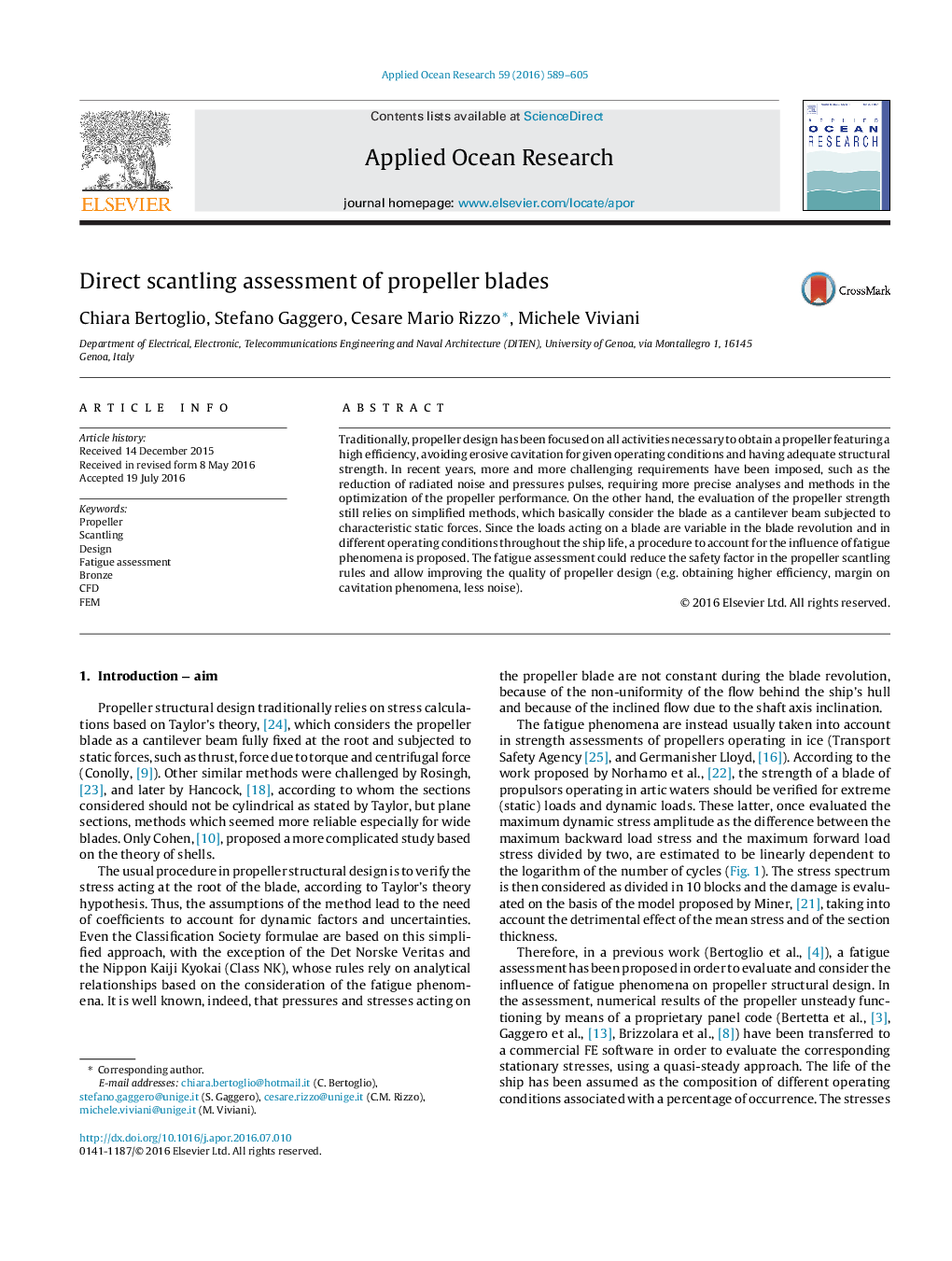| کد مقاله | کد نشریه | سال انتشار | مقاله انگلیسی | نسخه تمام متن |
|---|---|---|---|---|
| 1719804 | 1520244 | 2016 | 17 صفحه PDF | دانلود رایگان |
• The evaluation of the propeller strength still relies on simplified methods, basically considering the blade as a cantilever beam.
• A direct scantling assessment procedure for propeller blades is proposed in this paper, based on coupled CFD and FEM analyses.
• Loads acting on a blade are variable in the blade revolution and in different operating conditions.
• Governing limit states are identified and the influence of fatigue phenomena is duly considered.
• The fatigue assessment could reduce the safety factors in propeller scantling and allows improving the quality of propeller design.
Traditionally, propeller design has been focused on all activities necessary to obtain a propeller featuring a high efficiency, avoiding erosive cavitation for given operating conditions and having adequate structural strength. In recent years, more and more challenging requirements have been imposed, such as the reduction of radiated noise and pressures pulses, requiring more precise analyses and methods in the optimization of the propeller performance. On the other hand, the evaluation of the propeller strength still relies on simplified methods, which basically consider the blade as a cantilever beam subjected to characteristic static forces. Since the loads acting on a blade are variable in the blade revolution and in different operating conditions throughout the ship life, a procedure to account for the influence of fatigue phenomena is proposed. The fatigue assessment could reduce the safety factor in the propeller scantling rules and allow improving the quality of propeller design (e.g. obtaining higher efficiency, margin on cavitation phenomena, less noise).
Journal: Applied Ocean Research - Volume 59, September 2016, Pages 589–605
